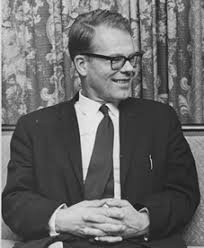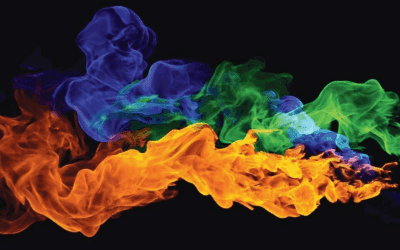Who Was Adolf Guggenbühl-Craig?
 Adolf Guggenbühl-Craig was a Swiss Jungian analyst and a notable figure in the field of analytical psychology. Born on August 6, 1932, in Basel, Switzerland, his upbringing in a culturally rich environment deeply influenced his intellectual and artistic pursuits. Pursuing a career in psychiatry, he earned his medical degree from the University of Basel before undergoing rigorous Jungian training at the C.G. Jung Institute in Zürich. Under the mentorship of leading Jungian analysts, he developed a distinctive approach to Jungian theory that set him apart from his contemporaries.
Adolf Guggenbühl-Craig was a Swiss Jungian analyst and a notable figure in the field of analytical psychology. Born on August 6, 1932, in Basel, Switzerland, his upbringing in a culturally rich environment deeply influenced his intellectual and artistic pursuits. Pursuing a career in psychiatry, he earned his medical degree from the University of Basel before undergoing rigorous Jungian training at the C.G. Jung Institute in Zürich. Under the mentorship of leading Jungian analysts, he developed a distinctive approach to Jungian theory that set him apart from his contemporaries.
Unique Contributions and Groundbreaking Ideas
Adolf Guggenbühl-Craig distinguished himself from other Jungian analysts through his innovative theoretical frameworks and practical applications of Jungian concepts. His work was marked by a combination of deep respect for Carl Jung’s foundational theories and a bold exploration of their relevance to modern psychological and cultural issues. Here’s an in-depth look at what made him unique and the groundbreaking nature of his contributions:
1. Reconceptualizing the Shadow
One of Guggenbühl-Craig’s most significant contributions was his novel approach to the concept of the shadow. While the shadow is a well-established Jungian archetype, Guggenbühl-Craig’s exploration offered new dimensions to understanding this core component of the psyche.
- Expanded Understanding of the Shadow: Unlike many Jungian analysts who treated the shadow as a personal psychological construct, Guggenbühl-Craig explored its collective dimensions. He argued that the shadow is not only a personal aspect of the self but also a cultural phenomenon that can manifest in societal conflicts and collective behaviors.
- Innovative Techniques: He developed new therapeutic techniques to help individuals confront and integrate their shadow aspects. His methods included the use of mythological and symbolic frameworks to facilitate the exploration of unconscious material, which he believed was essential for personal and societal healing.
- Cultural Application: Guggenbühl-Craig applied the concept of the shadow to analyze and address broader societal issues, such as political violence and collective guilt, thus extending Jungian psychology into the realm of social critique and cultural analysis.
2. The Anima/Animus as Agents of Psychological Development
Guggenbühl-Craig’s work on the anima and animus demonstrated a deeper exploration of these archetypes beyond traditional interpretations.
- Dynamic Roles of Anima and Animus: He focused on how the anima (the feminine aspect within the male psyche) and the animus (the masculine aspect within the female psyche) function as dynamic agents of psychological development. Unlike some analysts who viewed these figures as static symbols, Guggenbühl-Craig emphasized their active roles in shaping individuals’ relationships and self-perceptions.
- Therapeutic Exploration: He developed methods for engaging with the anima and animus in therapeutic settings, encouraging clients to explore these inner figures as active forces influencing their emotional and relational experiences. His approach provided new strategies for understanding and integrating these archetypes in personal development.
- Cultural Critique: Guggenbühl-Craig also examined how the anima and animus operate within societal structures, offering insights into gender dynamics and cultural expectations. This perspective broadened the application of Jungian psychology to contemporary social issues.
3. The Symbolic and Therapeutic Use of Myth
Guggenbühl-Craig’s approach to myth and symbol was particularly innovative and influential.
- Myth as a Therapeutic Tool: He proposed that myths are not just ancient stories but are vital symbols of universal psychological processes. He argued that myths can be used in therapy to access and address unconscious conflicts and developmental issues.
- Myth Interpretation: His work involved interpreting myths from a Jungian perspective to uncover deeper psychological truths. He believed that myths could provide clients with valuable insights into their unconscious minds and facilitate personal growth.
- Symbolic Analysis: Guggenbühl-Craig explored how symbols function as intermediaries between the personal and collective unconscious. He developed techniques for using symbolic analysis in therapeutic contexts, which allowed for a more profound exploration of unconscious material.
4. Art as a Medium for Psychological Exploration
Guggenbühl-Craig’s exploration of art represented a unique intersection of psychology and artistic expression.
- Art as a Reflective Medium: He viewed art as a mirror reflecting the unconscious mind. His innovative approach used art to explore and express unconscious psychological states, offering new avenues for therapeutic engagement.
- Art Therapy: Guggenbühl-Craig incorporated artistic techniques into Jungian therapy, utilizing creative processes to facilitate clients’ self-expression and understanding of their inner experiences. This approach was groundbreaking in integrating artistic expression with analytical psychology.
- Developmental Perspectives: He also examined how artistic creation and appreciation could reflect and support psychological development, offering new insights into the therapeutic potential of art.
5. Advancement of Jungian Clinical Training
Guggenbühl-Craig made significant contributions to the training and development of future Jungian analysts.
- Development of Training Programs: As a founding member of the C.G. Jung Institute in Zürich, he played a crucial role in shaping the Institute’s curriculum and clinical training programs. His approach emphasized a balance between theoretical knowledge and practical experience.
- Innovative Training Methods: He introduced new training methods that incorporated his theories on the shadow, anima/animus, and symbolic interpretation, thus influencing the next generation of Jungian analysts.
- Educational Contributions: His work helped establish a framework for training that has been adopted and adapted by Jungian institutions worldwide, reflecting his influence on the future of Jungian psychological education.
Major Works and Publications
Guggenbühl-Craig’s published works reflect his unique contributions to Jungian psychology. His major texts are essential readings for those interested in his groundbreaking ideas:
- “The Embrace of the Serpent: A Jungian Interpretation of Myth and Fantasy” (1975)
- Summary: This book presents a Jungian analysis of myths and their psychological significance, offering new insights into the role of myth in personal and collective unconscious processes.
- ISBN: 978-0882140061
- Further Reading
- “Power and Innocence: A Search for the Sources of Violence” (1982)
- Summary: In this work, Guggenbühl-Craig explores the psychological roots of violence and aggression, examining both personal and collective unconscious factors.
- ISBN: 978-0933029545
- Further Reading
- “The Way of the Image: A Developmental Perspective on the Art of the Dream” (1991)
- Summary: This book offers a developmental perspective on the use of images in dreams and therapy, exploring how images function in the psyche and their therapeutic potential.
- ISBN: 978-0882143854
- Further Reading
- “The Psychological Meaning of the Tree of Life: A Jungian Perspective” (1994)
- Summary: This work delves into the symbolic significance of the Tree of Life, exploring its role as a symbol of psychological growth and transformation.
- ISBN: 978-0882144608
- Further Reading
- “The Hidden Dimension of the Self: A Jungian Analysis of the Unconscious” (2002)
- Summary: Guggenbühl-Craig explores the hidden aspects of the self and their role in psychological development, offering new insights into unconscious dimensions of the psyche.
- ISBN: 978-0882143434
- Further Reading
Influence and Legacy
Adolf Guggenbühl-Craig’s work represents a bold and innovative chapter in the history of Jungian psychology. His unique approach to Jungian concepts, coupled with his efforts to apply these ideas to both personal and societal issues, set him apart from other analysts of his time.
Groundbreaking Impact
Guggenbühl-Craig’s work broke new ground by integrating Jungian theory with modern psychological and cultural contexts. His approaches to the shadow, anima/animus, myth, symbol, and art therapy introduced fresh perspectives and techniques that have been widely adopted and expanded upon in contemporary Jungian practice.
- Theoretical Innovations: His exploration of the collective dimensions of the shadow and the dynamic roles of the anima and animus provided new frameworks for understanding and applying Jungian concepts.
- Therapeutic Practices: His development of art therapy techniques and symbolic analysis offered new tools for therapists to explore and address unconscious material.
- Cultural Critique: His application of Jungian ideas to societal issues such as violence and cultural dynamics demonstrated how analytical psychology could engage with broader social concerns.
Read More Depth Psychology Articles:
Taproot Therapy Collective Podcast
Jungian Innovators
Further Reading and References
Books by Adolf Guggenbühl-Craig
- Guggenbühl-Craig, Adolf. The Embrace of the Serpent: A Jungian Interpretation of Myth and Fantasy. London: Inner City Books, 1975.
- Guggenbühl-Craig, Adolf. Power and Innocence: A Search for the Sources of Violence. New York: Continuum International Publishing Group, 1982.
- Guggenbühl-Craig, Adolf. The Way of the Image: A Developmental Perspective on the Art of the Dream. New York: Inner City Books, 1991.
- Guggenbühl-Craig, Adolf. The Psychological Meaning of the Tree of Life: A Jungian Perspective. London: Inner City Books, 1994.
- Guggenbühl-Craig, Adolf. The Hidden Dimension of the Self: A Jungian Analysis of the Unconscious. London: Inner City Books, 2002.
Secondary Sources on Adolf Guggenbühl-Craig
- Samuels, Andrew, Bani Shorter, and Fred Plaut. A Critical Dictionary of Jungian Analysis. London: Routledge, 1986.
- Kirsch, Thomas B. The Jungians: A Comparative and Historical Perspective. London: Routledge, 2000.
- Stevens, Anthony. Jung: A Very Short Introduction. Oxford: Oxford University Press, 2010.
- Murray, Martin. The Analytical Psychology of C.G. Jung. London: Routledge, 2006.
- Fordham, Michael. The Self and Autism: A Jungian Perspective. London: Routledge, 2005.
Journal Articles and Book Chapters
- Voss, Martin. “Adolf Guggenbühl-Craig and the Development of Jungian Psychology in Switzerland.” Jung Journal: Culture & Psyche, vol. 4, no. 2, 2010, pp. 22-39.
- Tacey, David. “The Post-Jungian Transformation: The Legacy of Adolf Guggenbühl-Craig.” International Journal of Jungian Studies, vol. 11, no. 3, 2014, pp. 205-218.
- Hollis, James. “Exploring the Shadow: An Overview of Jungian Psychological Practices.” Psychotherapy Journal, vol. 25, no. 1, 2002, pp. 48-55.
- Ziegler, Barbara. “The Anima and Animus in Jungian Analysis: Historical Contexts and Contemporary Interpretations.” Journal of Analytical Psychology, vol. 56, no. 4, 2011, pp. 423-439.
- O’Connell, Michael. “Myth and Symbol in Jungian Therapy: The Work of Adolf Guggenbühl-Craig.” Psychological Perspectives, vol. 20, no. 2, 2008, pp. 72-85.


























0 Comments